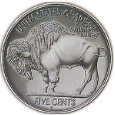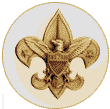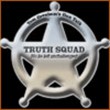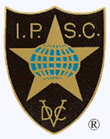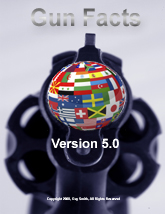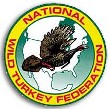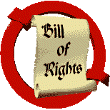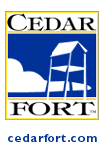| This is an account of the origins of the kingdoms of Spain, up to the reign of Sancho el Mayor, who unified Spain. For an account of the period just after that, see el_cid.htm.
Of the early people of the Spanish peninsula, the Romans mentioned three races: Iberians, Celts, and Celtiberians.
The Iberians seem to have been, either partly or completely, people who had been coming from northeast Africa over a long period. They were probably Hamitic or black; the Romans said they were "dark complexioned, with unkempt hair, small of face but with the cheekbones emphasized and the lower lip prominent, small-framed, alert and wiry."
The Phoenicians and the Carthaginians came to Spain, but not to settle. They founded some cities along the coasts, but mostly they wanted raw materials that could be mined and men who could be taken for their armies.
The Celts were that fair people (red-haired or perhaps even blond) who came out of the Danube area and across Europe. They invaded Spain in the early 6th century, and their tribes were mainly in the northwest. Some Iberians kept their culture in the east, far north, and south, and the Celtiberians - a mixture, apparently - were in the center.
The Greeks came, too, and settled along the eastern and southern coasts.
Then the Romans came, and Spain became part of the Roman Empire. Many Romans settled there, and the people became Romanized. Their language, law, and religion were Roman.
As the empire came apart, large barbarian tribes were on the move. In the early 5th century they invaded Spain. There were Vandals, Suevi, and Alans, but in the end the Visigoths ruled. At first they tried to prop up and preserve the empire, but at last Visigoth kings ruled in Spain.
The invasion of the Moslems (usually called Moors in Spanish history) began in 711. Among them were Arabs, Berbers, and blacks. They swarmed over Spain, crossed the Pyrenees, and were turned back at Poitiers in 732 by the Franks.
When most of Spain had been conquered by the Moors, some remnants of free Spanish were pushed into a few pockets in the north. A Christian remnant was holding out in the mountains of Asturias in the northwest. In 718 they elected Pelayo (said to have been a Visigoth) their king, and his victory at Covadonga was the beginning of the fight to win Spain back.
When Pelayo died in 737, his brother Favila ruled for two years. It was said that he was killed by a bear while hunting.
Pelayo's daughter Ormesinda had married Alfonso, who had succeeded his father, Peter, as duke of Cantabria. He took over and ruled as Alfonso I "the Catholic." (The name in English is usually written Alphonse or Alphonso; in Galician it was Affonso, in Leonese Alonso, and in Castilian Alfonso. It was originally Ildefonso [Ildefonsus], perhaps showing the Roman heritage.)
In 740 the Berbers of northwestern Spain revolted against the caliphate. Then there was drought and famine, and in 750 plague struck, killing thousands. In the middle of all this, Alfonso put together the kingdom of Galicia. It was roughly the same in territory as the old Roman province of Galicia - from the Bay of Biscay to the line of the Duero, from the sea to the foot of the mountains of Navarra. Alfonso and his men rode through that whole region, killing the Berbers that survived and taking Christian survivors back to their stronghold. From here his descendants would gradually push back the Moors and spread out into Leon and then Bardulia.
In the parts of Spain held by the Moors, people reacted in various ways; some even adopted the Muslim faith in order to get along with the new rulers. In the east one great Visigoth family accepted Islam and founded a dynasty with its center at Zaragoza (Saragossa). They were called the Beni-Casi or the Beni-Lope.
For some time their worst enemy was the Carolingians, who invaded over the Pyrenees. The Beni-Casi joined with the Basques, who had held out in the Pyrenees, to drive out the Frankish counts and wardens established below the Pyrenees in the marches by the first Carolingians.
On the eastern edge of the Pyrenees the Franks met no one, and they formed the Marca Hispaniola. The old city of Barcelona, which had been there since before the Romans, was its chief city. By the reign of Charles the Fat a principality had been formed. Wilfred the Hairy (the Comes Vellosus, called that because his land was poor and full of scrub wood) founded the countship of Barcelona.
On the Bay of Biscay and at the foot of the Pyrenees, to the west of Aragon, the Navarrese had maintained their land. There Inigo Arista ruled at Pamplona in the 800s. He first married Iniga of Oviedo and then Theida of Biscay. By her he had a son, Garcia Inheges, who was king after him. Garcia and his second wife, Dadildis, were the parents of Sancho Garces I Abarca.
Sancho has been called the first historic king of Navarre; perhaps his father and grandfather were called kings of Pamplona, rather than Navarra. Sancho's wife was Toda Aznarez. Their descendants continued to rule from Pamplona, increasing their power.
In Asturias in the east the son of Alfonso I and Ormesinda was Fruela. The early headquarters or capital of these kings was at Cangas de Onis. In the reign of Fruela the city of Oviedo was founded on a hill rising from a broad valley, bounded on the northwest by the Sierra de Naranco.
Fruela's son was Alfonso II the Chaste, king of Asturias, who ruled from 789 to 842. In his reign Oviedo became the fixed residence of the kings of Asturias. The Camara Santa still stands; it is part of a chapel founded in 802. In the cathedral library are some old manuscripts, including a deed of gift from Alfonso.
Alfonso II's son was Ramiro I, king of Asturias. He built the Santa Maria de Naranco, originally his palace but later turned into a church.
Ramiro I's son was Alfonso III el Mayor (the Great), who ruled from 866 to 914 and consolidated the kingdom of Galicia during the weakness of the Omayyad princes of Cordova.
Alfonso III's son was Ordono II, who reigned as king of Asturias and Galicia from 914 to 924. In about 924 the reconquest was moving out far from Oviedo, and Ordono removed the capital to Leon.
Alfonso III was the ancestor of two brothers, Alfonso IV and Ramiro II.
Alfonso IV reigned from 924. He gave the crown to his brother Ramiro II and went into a religious house. Then he changed his mind, left, and took up arms against Ramiro. He was defeated; he was blinded and sent back to die in the cloister of Sahagun. Ramiro II reigned until 950.
In the days when their ancestors had pushed outward from Asturias through Galicia and Leon, some adventurous men had gone farther. They had pushed into the ancient Bardulia, fighting Moors and pushing them back. They called the land Castilla (castles) because of its many "peels" and towers. Burgos became its center.
The chiefs of Bardulia became the counts of Castilla, and finally the counts of Castilla were the rivals of the kings of Leon.
The descendant of Ramiro II was Alfonso V, king of Leon. He married Geloria (Elvira). He reigned from 999 to 1027.
The next-to-last count of Castilla had at least two children: Garcia, the last count of Castilla, and Elvira, who married Sancho III El Mayor (the Great), king of Navarra. They had four sons. Later their son Fernando married the Princess Sancha of Leon, daughter of Alfonso V and Geloria.
In 1027 Sancha's father was killed by an arrow while he was besieging the town of Viseu in northern Portugal, then held by Moors. Sancha's brother Bermudo, who may have been reigning with his father since 999, became sole king of Leon.
Then Count Garcia of Castilla was murdered by the sons of Count Vela of Alava. Garcia left no heirs, and Sancho of Navarra inherited the countship of Castilla by right of his wife. He gave it to his son Fernando to rule under him. Fernando was called king of Castilla, and Sancho called himself "king of the Spains." He was, in effect, a Spanish emperor.
Bermudo of Leon couldn't handle this - his brother-in-law on the throne of Castilla; he caused war and died in the battle of Tamaron in 1038.
Sancha's husband, Fernando I, took over Leon in right of his wife, and Leon (with Galicia) and Castilla were united.
Sancho the Great left Navarra to his son Garcia Sanchez III, "el de Nagera." The small Christian states of the Pyrenees, Aragon and Sobrarbe with the Ribagorza went to his sons Ramiro and Gonzalo. At this point the Navarrese line was established in all of Christian Spain.
For more of the story of Sancho's sons, see the file on the Cid (el_cid.htm).
From here our story goes in two directions, toward Aragon and Portugal; we'll take them one at a time.
In Aragon, Sancho's son Ramiro Sanchez became king. His only son was Sancho Ramirez I, who succeeded him in 1063.
In 1076 the king of Navarra, Sancho Garces IV, was assassinated. Perhaps the nobles thought his children were too young to reign. They elected Sancho Ramirez I of Aragon, and he became king of Navarra as Sancho V. Sancho was succeeded in 1094 by his son Pedro Sanchez I and then in 1104 by another son, Alfonso I the Warrior or the Battler.
Alfonso was king of Aragon and Navarra, but he wanted more. He married Urraca, daughter of Alfonso VI of Castilla and widow of Raymond of Burgundy. One authority calls her "a very dissolute and passionate woman." He wanted to be king of Castilla and they came to open war over it. To make matters worse, her son, Alfonso, was recognized as king in Galicia.
Finally the pope nullified their marriage because they were too closely related. When she died in 1126, her son reunited Castilla, Leon, and Galicia. Alfonso the Battler lost out on Castilla. When he died, in 1134, he left a will leaving his kingdom to the Knights Templar, the Hospitallers, and the Knights of the Sepulchre.
Of course, Navarra and Aragon would not permit that. Navarra gave its throne to Garcia Ramirez, grandson of the last king of the Navarrese line and grandson of the Cid.
Alfonso's brother, Garcia Ramirez or Ramiro the Monk (or the Priest King), decided it was up to him to do something about the future of Aragon. Although he was a monk, he was exclaustrated by the pope, left his monastery, became king of Aragon, and married Agnes of Aquitaine. When their daughter, Petronilla, was born, he betrothed her to Ramon Berenguer III (V?), count of Barcelona. Then he abdicated in her favor and returned to his monastery at Narbonne.
In 1151 Queen Petronilla married Count Ramon. His mother was Douce I, the heiress of the marquisate of Provence, and his father, Ramon IV Berenguer, count of Barcelona, ruled Provence in her name. Young Ramon was the chief prince of Catalonia and he ruled Aragon in right of his wife; thus Catalonia and Aragon were joined.
Their oldest son, Ramon Berenguer, became count of Barcelona in 1162, when his father died. He was only 11 years old, but he must have done all right. In 1164 his mother renounced her rights in Aragon in his favor, and he became king of Aragon. He ruled under the name of Alfonso II to please the Aragonese.
In 1162 his father's brother, Berenguer Ramon, began to rule in Provence, and after him his son (Ramon Berenguer II of Provence) and granddaughter (Douce II) ruled. But in this period the countship was established under the marquis, and they were probably counts, owing their allegiance to the marquis, the head of the family, who was count of Barcelona and king of Aragon.
In 1172 Douce II of Provence died, and Alfonso, who was probably already marquis of Provence, claimed the countship. He was opposed by Raymund V (Ramon), count of Toulouse, but most of the Provencal lords recognized Alfonso. (In 1176 he would sign a treaty with Raymund, in effect buying his rights in Provence.)
Alfonso sent his brother Pedro Ramon Berenguer to represent him as count in Provence, where he was known as Ramon Berenguer III. (Or perhaps his name was Pedro, and he adopted the other name as pleasing to the Provencals.)
In 1177 Alfonso helped Alfonso of Castilla to fight the Moors and conquer Cuenca, in the hill country between Castilla and Valencia, and as a reward Alfonso of Castilla gave up all claim to feudal superiority over Aragon.
But Alfonso of Aragon was ruler of both Aragon and Provence. "In character and interests he was rather Provencal than Spanish, no enemy of the Albigensian heretics, a favorer of the troubadors and himself a poet in the southern French dialect."
His brother in Provence died in 1181. He named his other brother, Sancho, to serve as count of Provence, and in 1193 he sent his oldest son, Alfonso, to rule under him in Provence, where he was known as Alfonso II. In the same year Count Alfonso married a cousin, Gersende de Sabran of Forcalquier, daughter of Count Guillaume II of Forcalquier. When his father-in-law died, Alfonso added Forcalquier to his lands.
When his father died in 1196, he was in line to succeed as king of Aragon. But he decided he liked Provence so much that he gave his Spanish lands to his brother Pedro and was happy to remain count of Provence. (He would have been Alfonso III of Aragon; some books call him that and some list the next Alfonso as Alfonso III.)
Alfonso and Gersende had one child, Ramon Berenguer IV, born in 1198.
King Pedro II and his wife also had only one child; he was Jaime I (James) the Conqueror, born in 1208.
Ramon Berenguer IV, count of Provence, married the daughter of the count of Savoy, and they had four daughters. One became queen of France, one queen of England, one countess of Toulouse and then of Cornwall, and one queen of Naples. Through this last marriage, Provence passed to Charles I of Anjou, king of Naples.
Now we go back to the time of the Cid. Portugal was then a county belonging to the ruler of Leon, who was then the king of Castilla and Leon.
Count Henri of Burgundy, son and brother of dukes of Burgundy, was one of the knights who went crusading into Spain. While he was there, he married Teresa of Castilla, an illegitemate daughter of King Alfonso VI of Castilla and Leon, the king of the Cid. The county of Portugal was part of her dowry, so Henri settled down and became count or duke of Portugal (and doubtless changed his name to Henrique).
At first he was a vassal of his father-in-law, but in 1109 Alfonso died, leaving everything to his daughter Urraca. At once Enrique invaded Leon, hoping to add to his lands. He died in 1112.
He left Teresa with a mess on her hands. Their son Alfonso I Henriques succeeded to the countship, but he was young and he was placed under his mother's tutelage. She had to govern, and her land had only recently been reconquered from the Moors and only as far as the Mondego.
In 1116 Teresa fought her half-sister and queen, Urraca, perhaps hoping to at least expand the land that would descend to her son. She fought again in 1120, and in 1121 she was besieged and captured at Lanhoso. A couple of archbishops came and negotiated a peace. The terms were that Teresa would go free and hold the county of Portugal as a fief of Leon.
In the next five years she gave wealth and titles to her lover, Fernando Peres, count of Trava, which estranged her other son, who was the archbishop of Braga, and the nobles, who were mostly foreign crusaders. She tried once more to do battle and was crushed again.
By 1128 her nobles were fed up. Alfonso was named sole ruler; he defeated her troops near Guimaraes and took her prisoner. She was deposed by her subjects and exiled with Peres. She died in 1130.
Alfonso was an exceptionally large man; some authors say he was seven feet tall. He defeated Alfonso Ramon of Castilla and Leon, his mother's ally, freeing Portugal from Castilla. But he found himself always busy with border fighting with Christian or Moorish neighbors.
After the victory of Ourique on July 26, 1139, against the combined forces of the Moors, his soldiers proclaimed him King Alfonso I. He assembled the Cortes of the kingdom at Lamego, and it declared that Portugal was no longer a dependency of Leon. He was crowned by the archbishop of Braganza. In 1143 he was a party to the Peace of Zamora, in which he was recognized as independent of any Spanish sovereign.
Thus Portugal became a country and his line was established.
|
